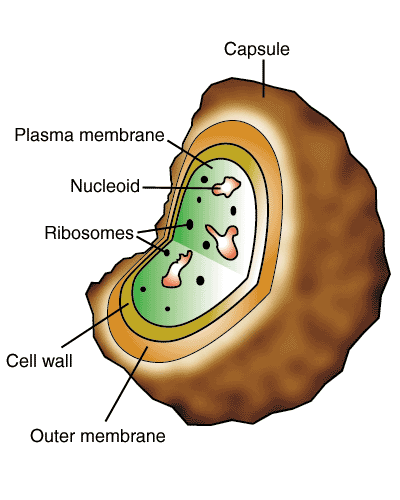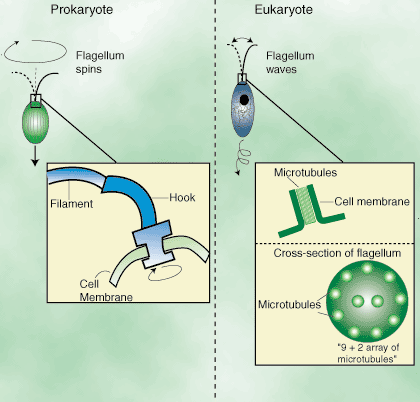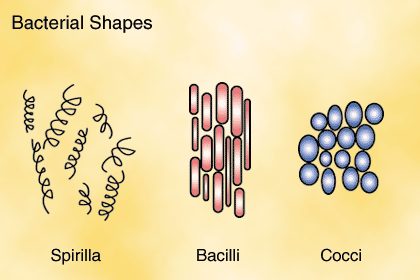A unique group of eubacteria that bears mentioning is the mycoplasmas. Classified as Gram-positive based on their relatedness to other Gram-positives, because mycoplasmas lack a cell wall they are functionally gram-negative. Mycoplasmas are both the smallest eubacteria and the smallest organisms capable of independent reproduction. They are barely larger than some viruses. Mycoplasmas have an extremely simple cell structure, a small genome, and are therefore of special evolutionary interest.
As we just saw, eubacteria are extremely diverse and specialized to their
environments. Surprisingly, the structure of most eubacterial cells is
relatively simple.

Many eubacteria have cell walls that lie outside of their plasma membranes. These are similar to the cell walls found in plants and fungi, but are composed of peptidoglycan rather than cellulose or chitin. In some eubacteria, this cell wall is covered by another layer called the outer membrane. Many eubacteria have yet another coating layer called a capsule. It is composed mostly of complex sugars and serves to protect the cell against environmental dangers, such as attack by host immune defenses or dehydration.
Motility
Many eubacteria are motile. In most cases, rotating structures called flagella enable them to move. The term flagella is also used to refer to similar motility structures in protists and other eukaryotic cells, but the two are not the same and should not be confused. Prokaryotic flagella are composed of protein subunits called flagellin, while eukaryotic flagella are made of arrays of microtubules made of tubulin. Prokaryotic flagella are anchored in the plasma membrane and move in a spiral motion. Eukaryotic flagella are enclosed by the plasma membrane and can only move by beating back and forth. Exceptions to this structure of prokaryotic flagella are found in some species of spirochetes, whose flagella resemble those of eukaryotes. It is believed that eukaryotes may have developed flagella through symbiotic relationships with these spirochetes.

Shape
Eubacteria are often classified by their shape. They fall into three main shape
categories. Spherical eubacteria are called cocci; rod-shaped eubacteria
are known as bacilli; spiral or helically-shaped eubacteria are
spirilla.

Unlike eukaryotic cells, which divide by mitosis or meiosis, eubacteria reproduce by binary fission. In this process, the genetic material is replicated, and the two copies move to separate nucleoid regions. Next, the plasma membrane pinches inward, producing two equal daughter cells. While these daughter cells are completely independent of each other, in some species they remain together, forming colonies and filaments. Binary fission can take place very rapidly, on the order of about one split every 20 minutes, accounting for the amazing replicative ability of eubacteria.













